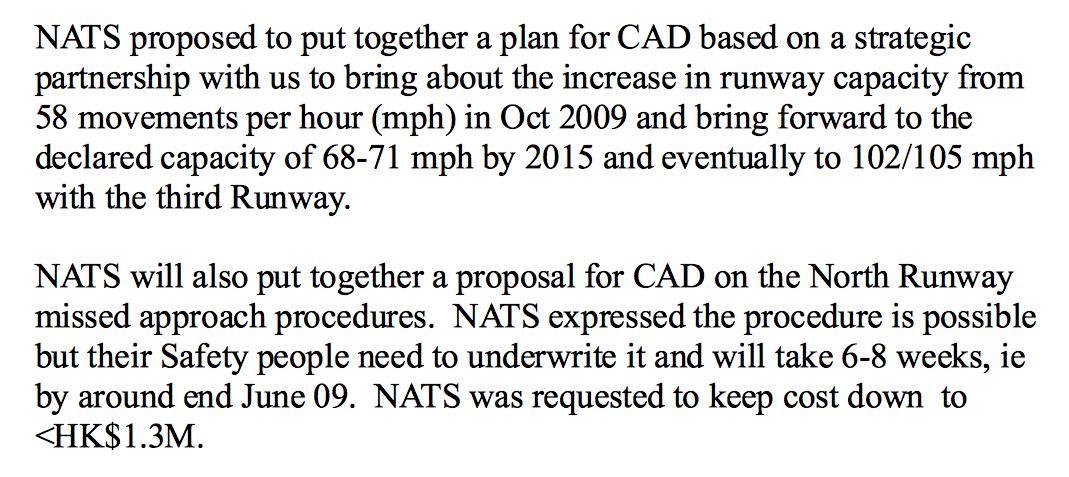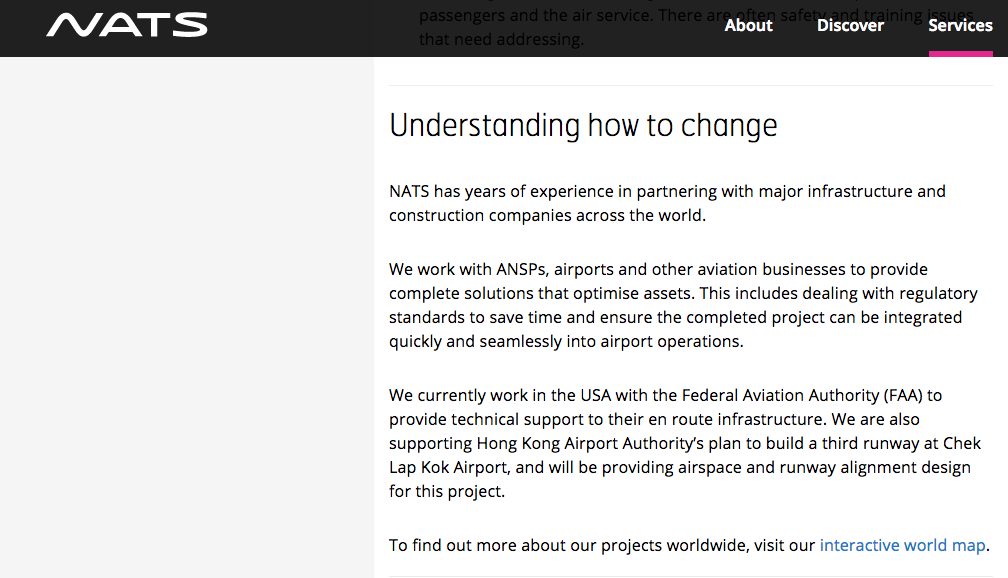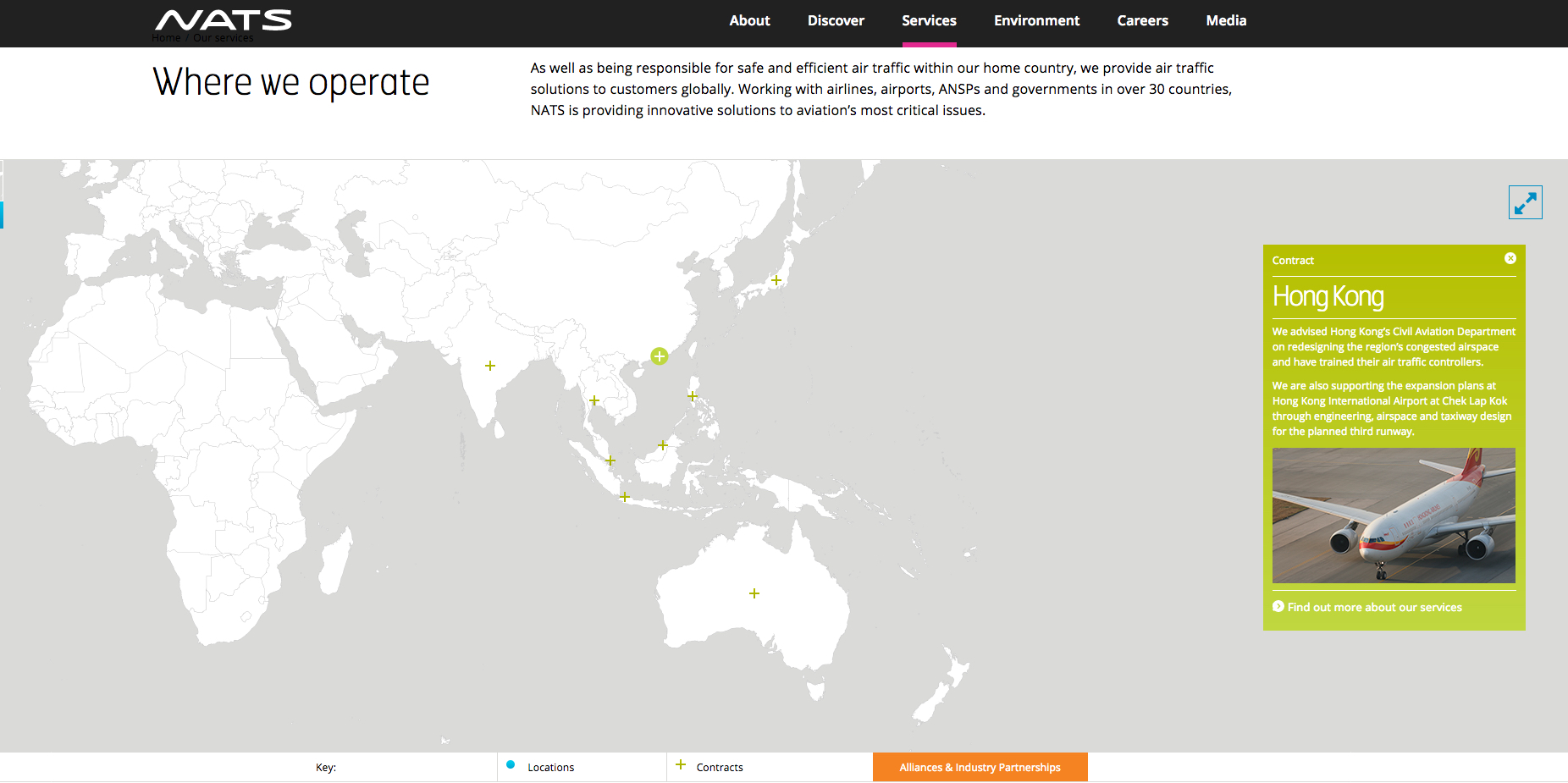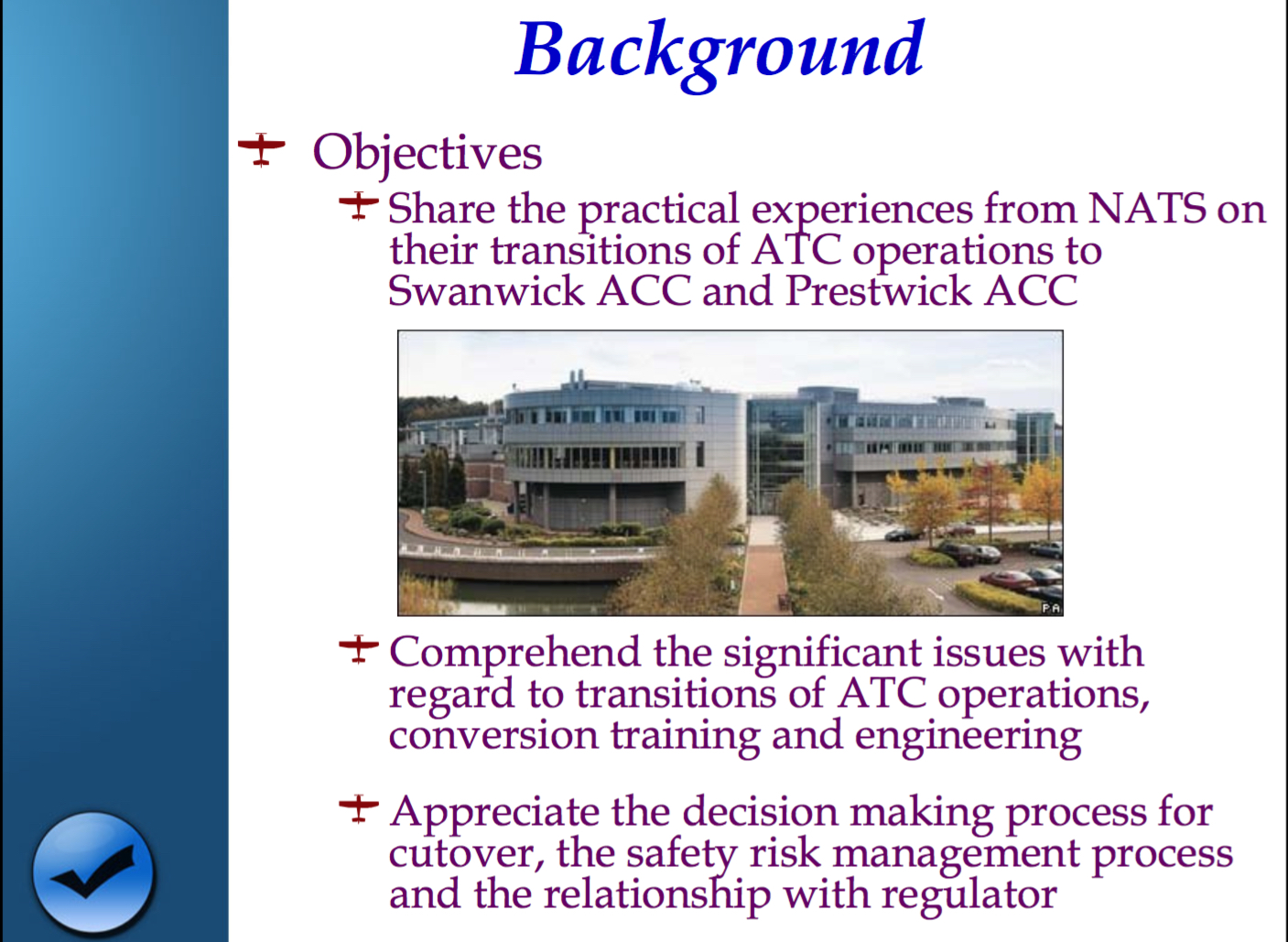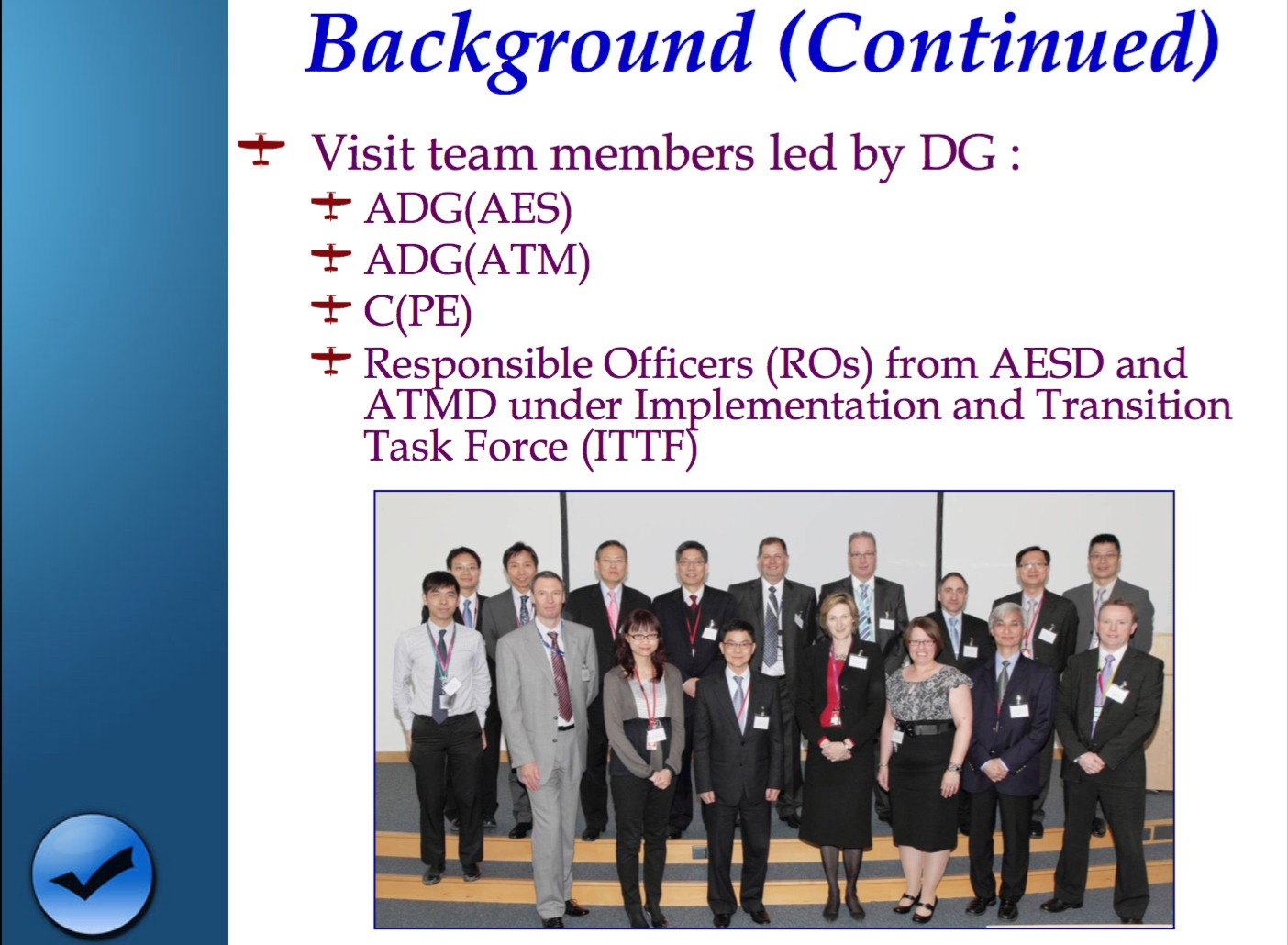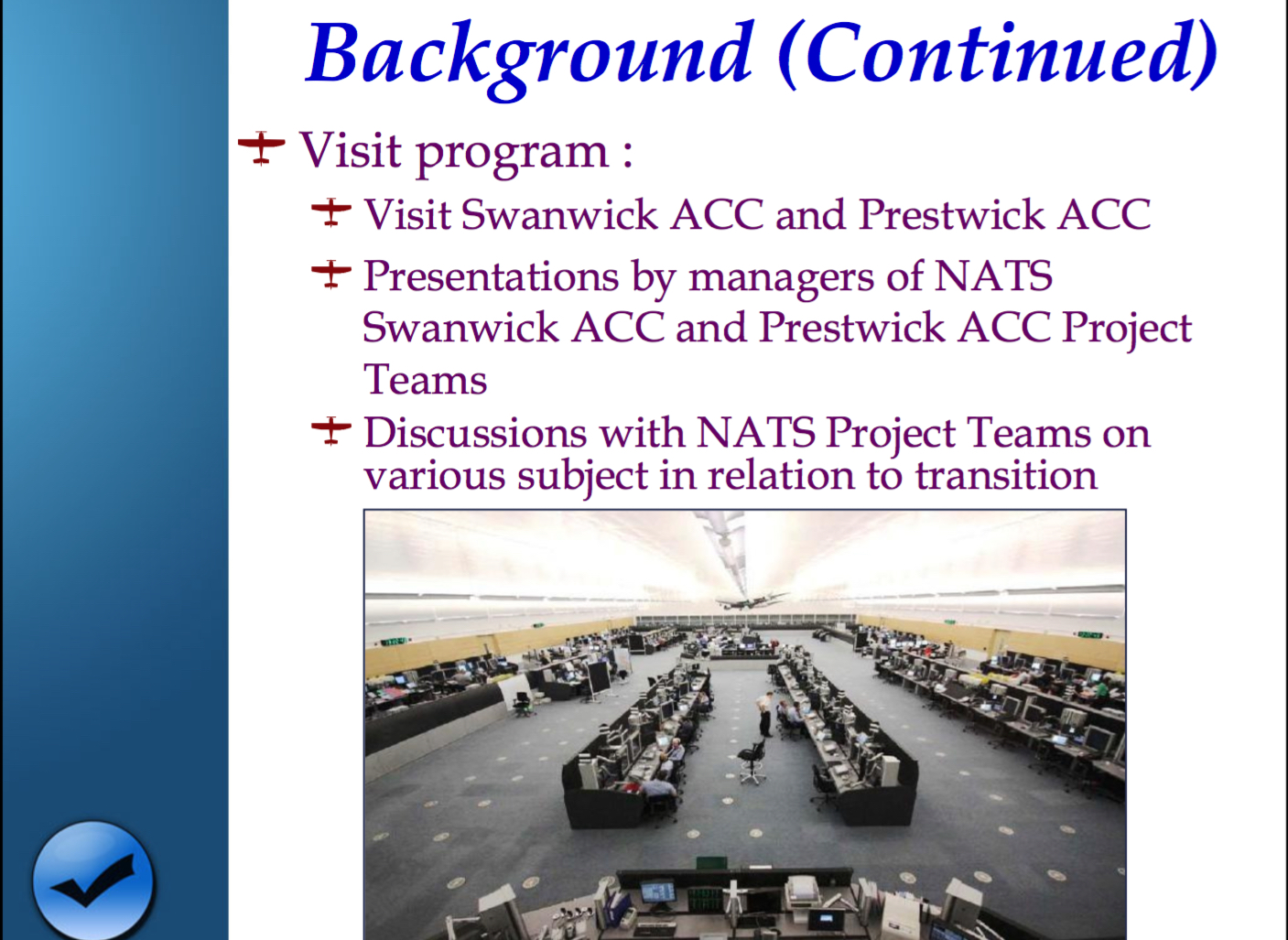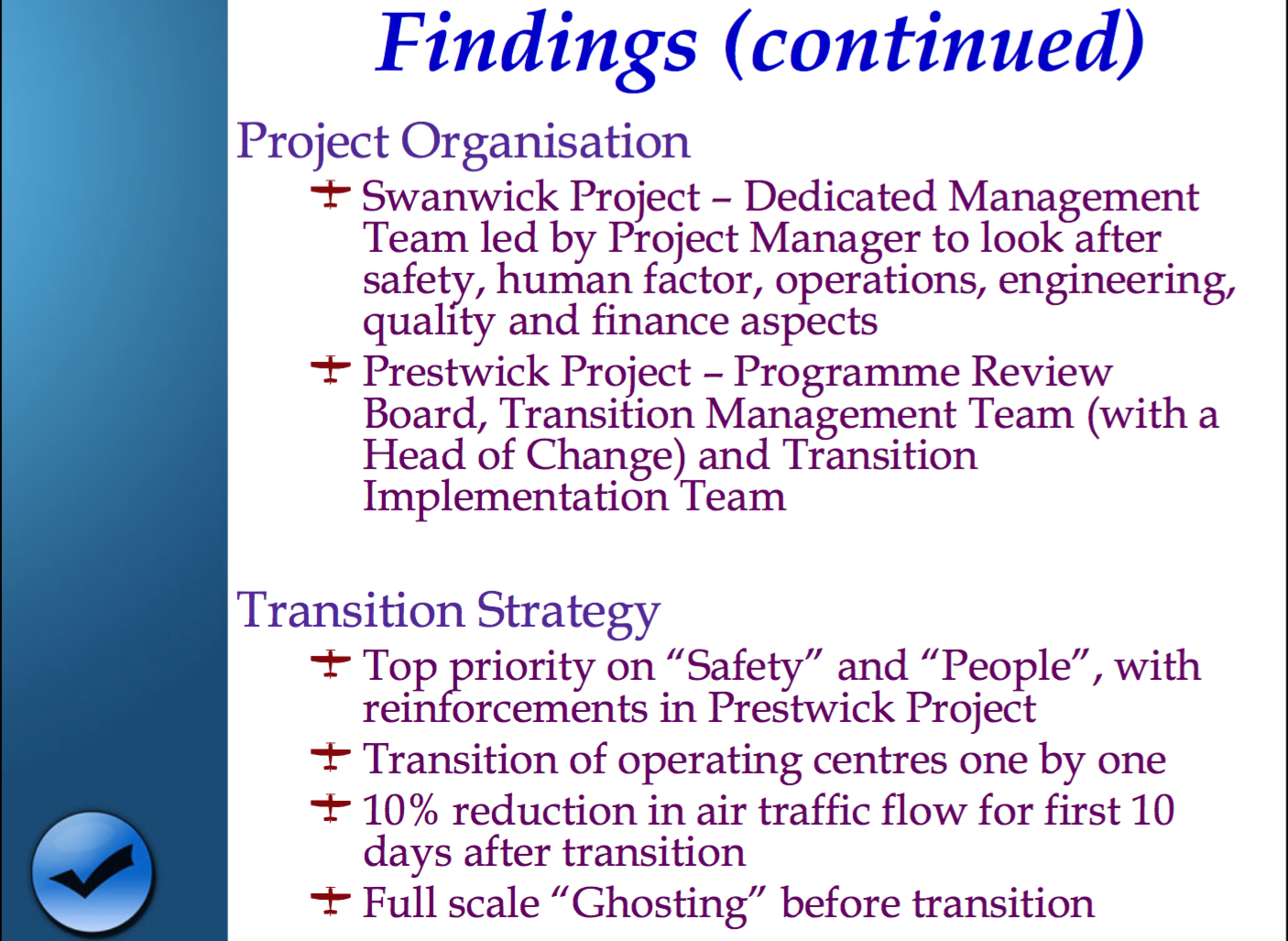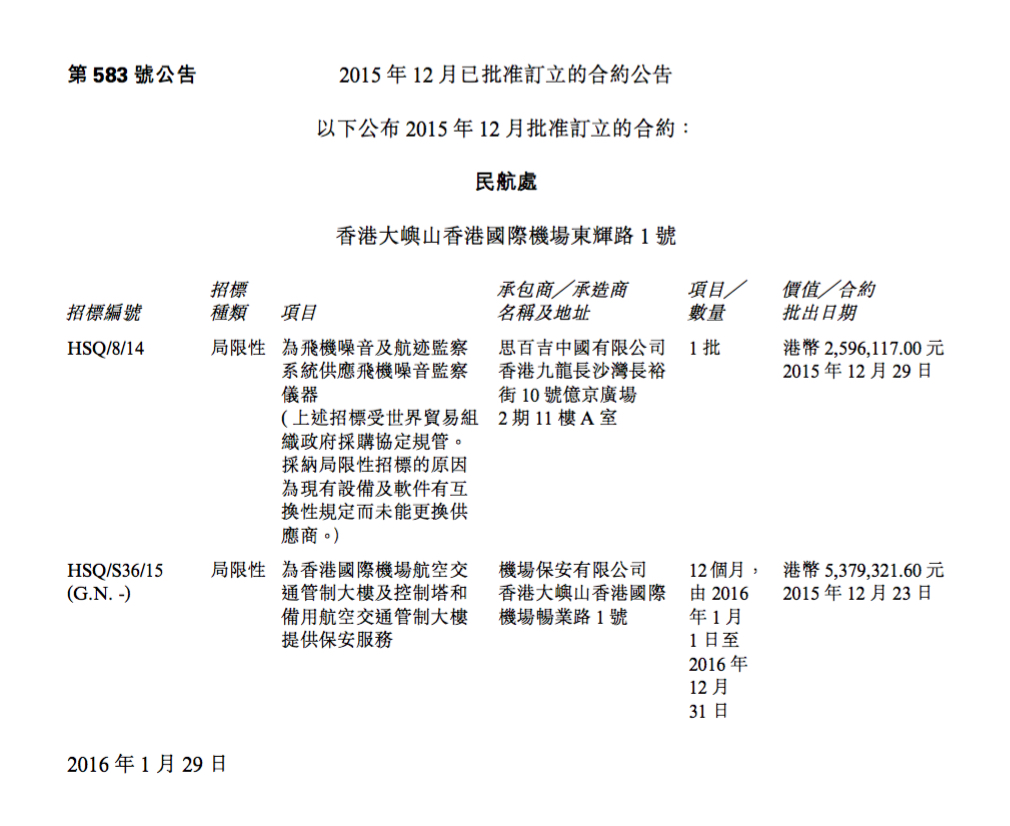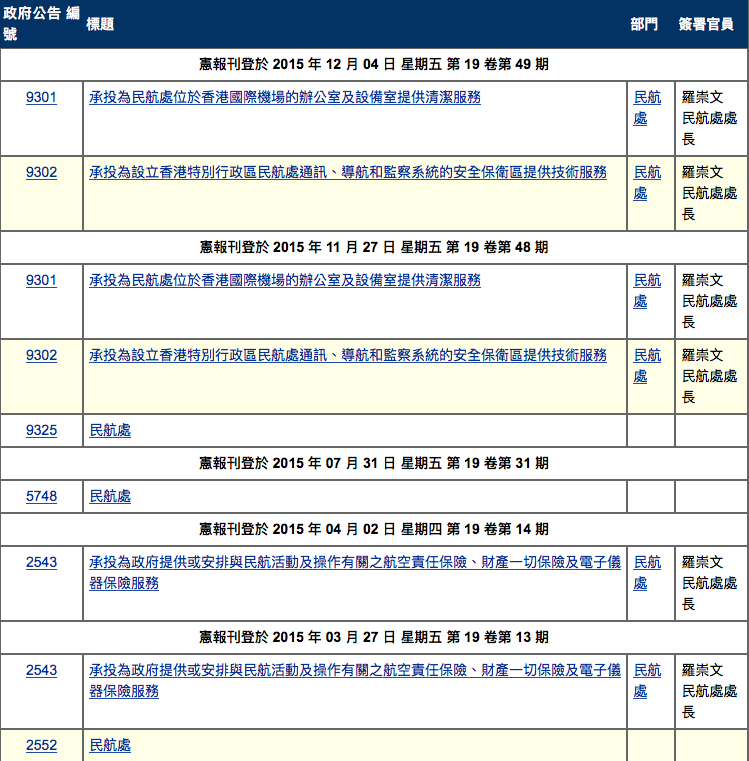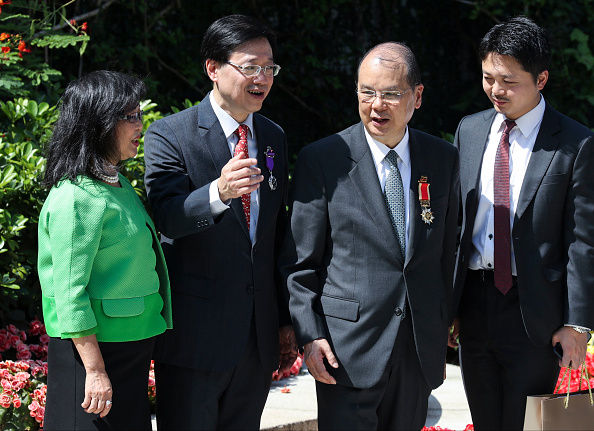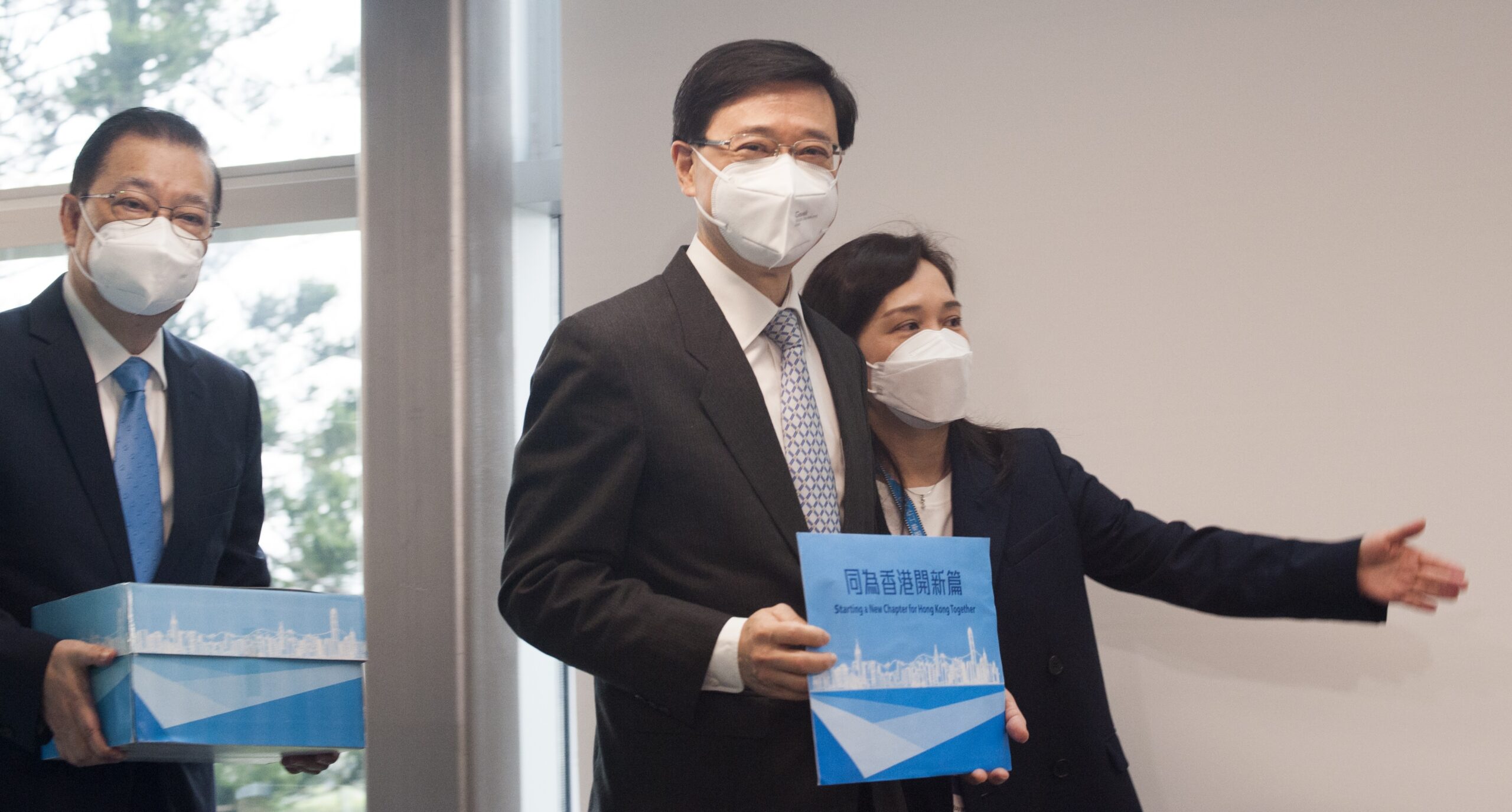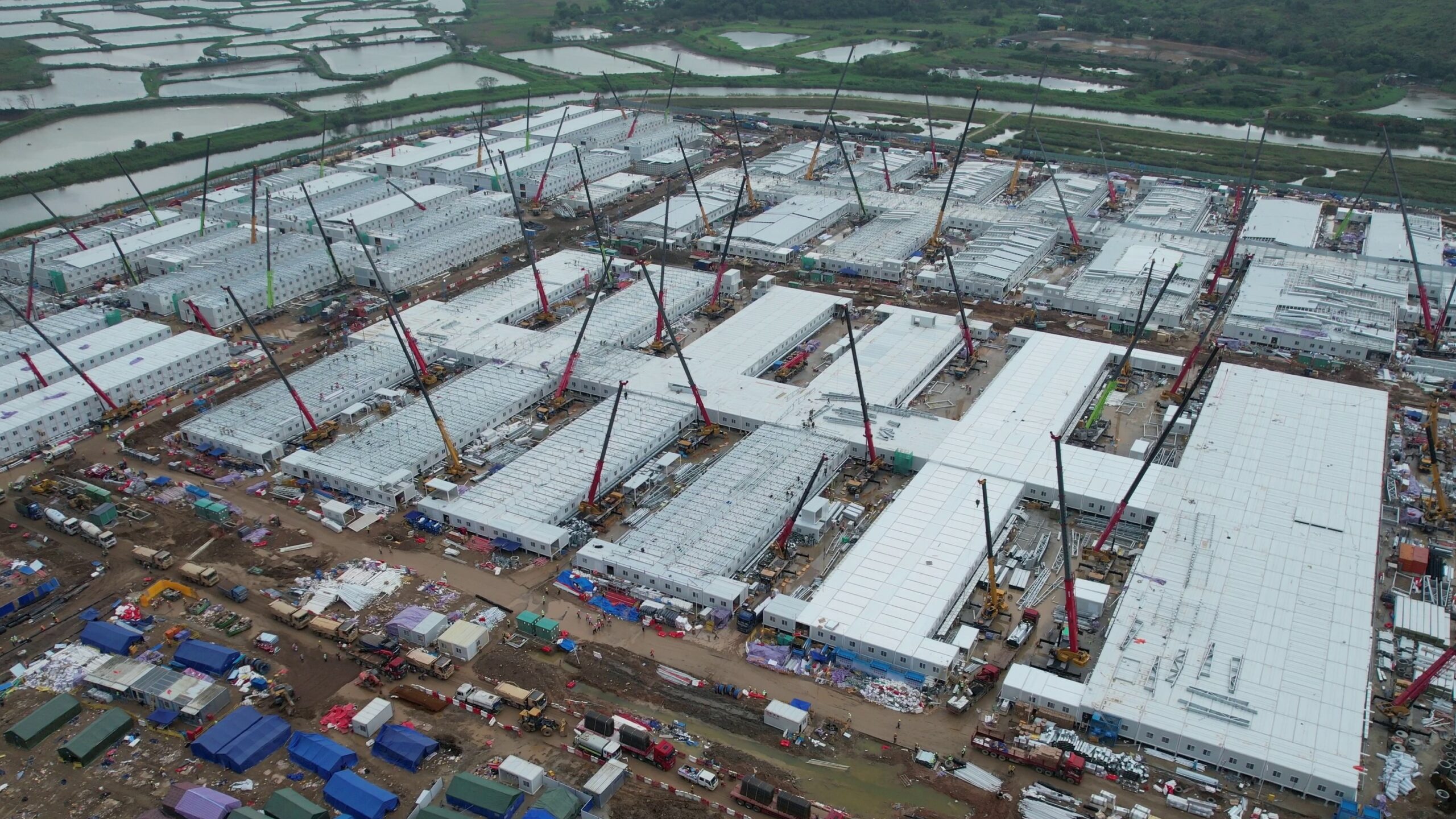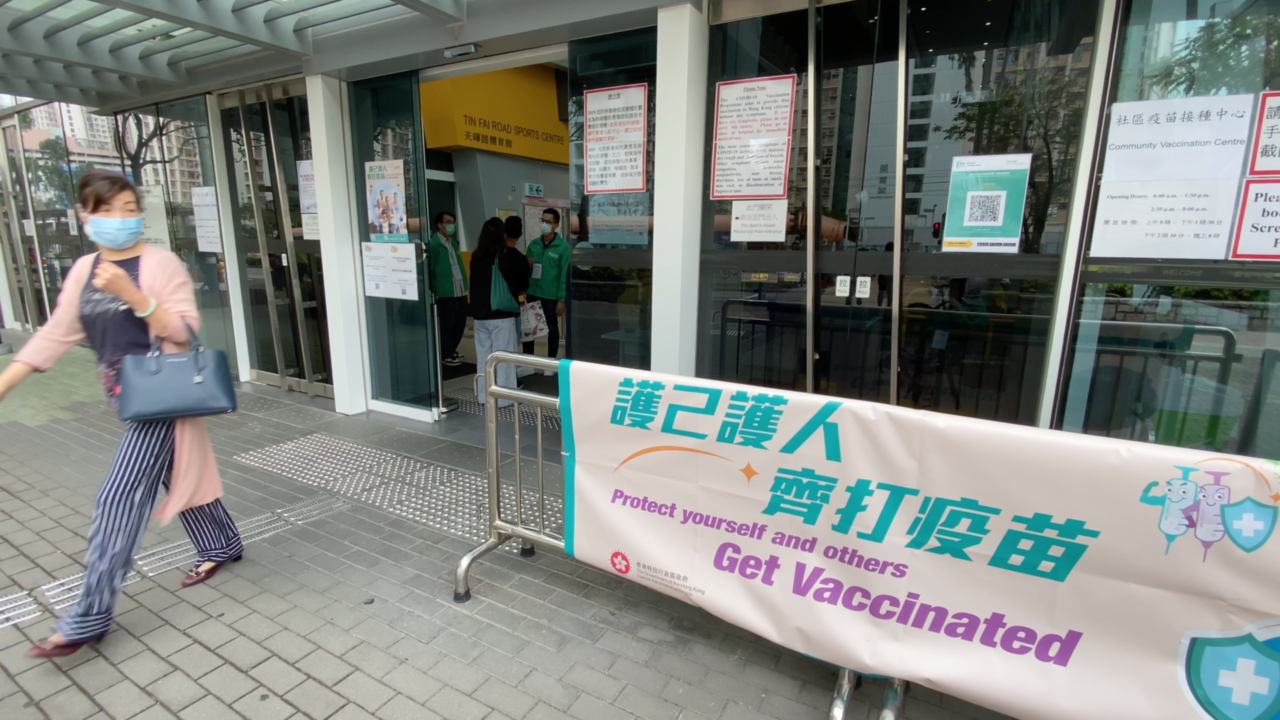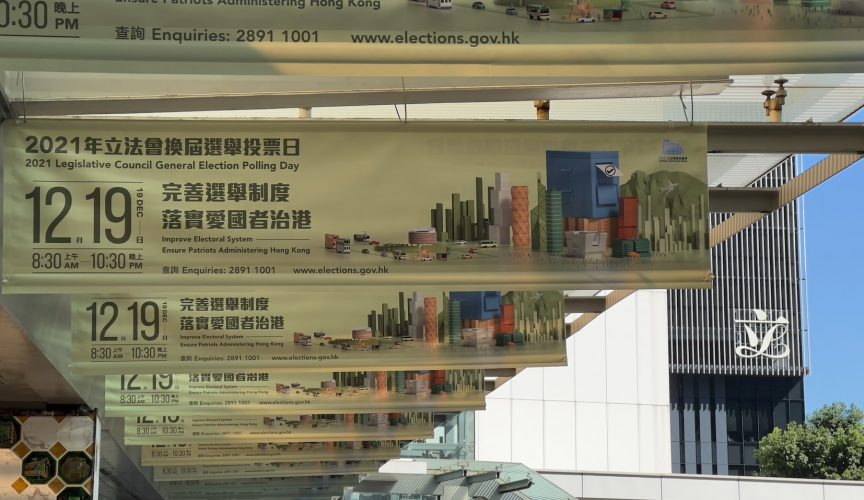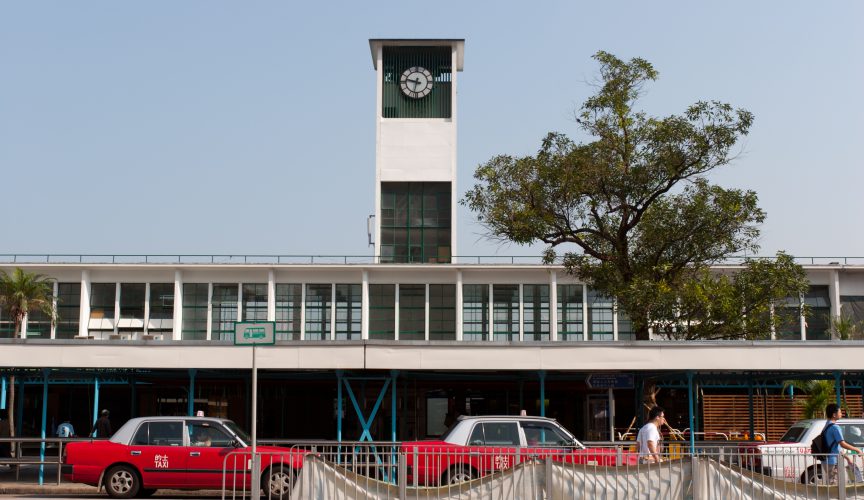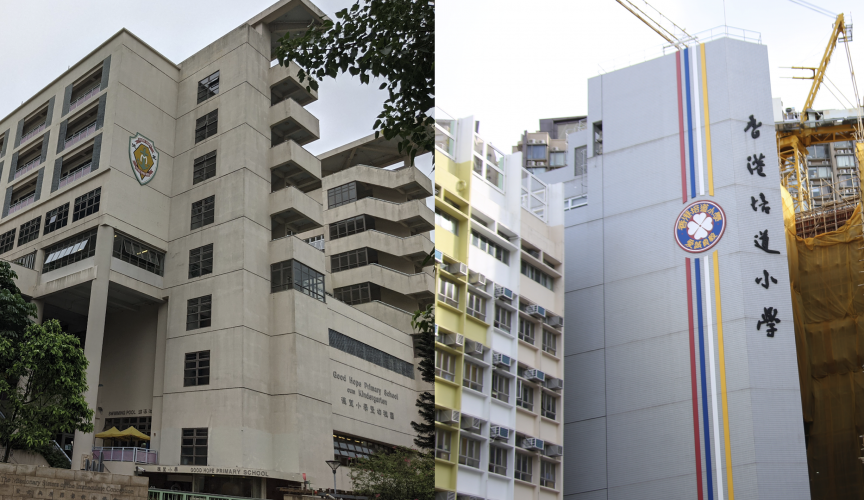UK-based National Air Traffic Services was awarded a consultant contract for the troubled air traffic management system without competition
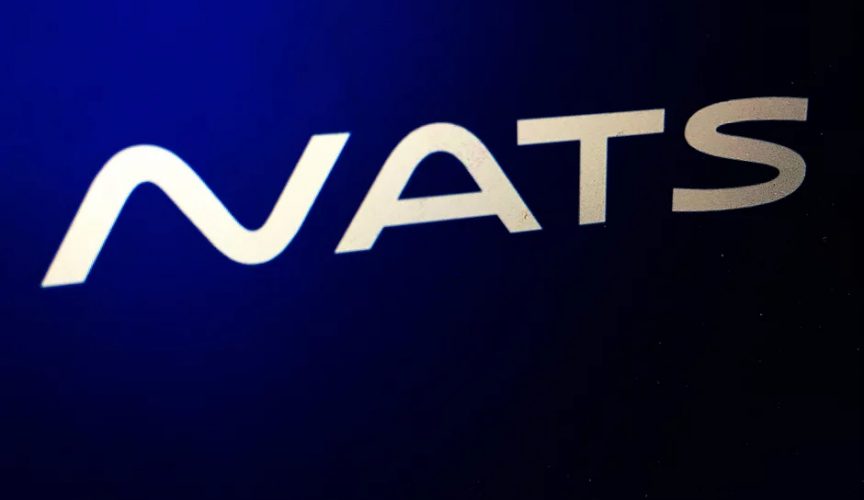
The Civil Aviation Department (CAD) recruited UK-based National Air Traffic Services (NATS) by a single tender as an independent consultant for the operational readiness of the troubled air traffic management system (ATMS), according to internal documents seen by FactWire.
The CAD has issued at least nine statements quoting feedback from NATS, its ‘overseas independent consultant’, as proof that the ATMS is operating smoothly. Sources told FactWire that the CAD asked to recruit NATS, UK’s provider of air traffic control services, as its independent consultant by single tender, with a tender price of just below HK$1.4 million to fulfill requirements for single tendering under the Stores and Procurement Regulations.
The CAD began its close relationship with NATS in 2009, with talks on forming a ‘strategic partnership”, internal CAD documents show. Internal analysis favoured the hiring of NATS because it offered ‘more flexibility in commercial interests’.
The CAD recommended hiring NATS by single tender in October 2015 to review the operational readiness of the new ATMS. Under the Stores and Procurement Regulations, limited tendering, such as single or restricted tendering, is only permissible under specified exceptional circumstances, such as an unpredictable event that makes the contract time critical, or the amount of the contract not exceeding HK$1.43 million and thus the procurement department agrees that the service provider is a suitable and cost-effective supplier. Sources said the CAD told the procurement department in October 2015 that in order to fulfil the plans of launching the new ATMS in mid-2016, the department had to hire within two months a service provider that was well-established and had an understanding of Hong Kong’s air traffic control operations.
That service provider, the CAD said, should have representatives in Hong Kong in order to maintain close communication. Since NATS had participated in the ‘Airspace and Runway Capacity Study’ and possibly other projects concerning Hong Kong International Airport’s third runway in 2008, the CAD therefore said it believed that NATS was the only firm that could meet all requirements within the two-month timeframe. It asked the procurement department to approve the awarding of the contract to NATS by single tender with a budget below HK$1.4 million.
One source questioned the requests, saying: ‘Were the two conditions necessary? Or were they merely excuses so NATS could be hired by single tender?’
The Legislative Council (LegCo) public accounts committee criticized the CAD in its report on 3 June 2015 for the inefficient management of procurement and implementation of the ATMS, and urged Secretary for Transport and Housing Anthony Cheung Bing-leung to hire an independent expert panel to assess the safety of the new system.
Until media reports revealed a ‘catastrophic malfunction’ and ‘system paralysis’ of the ATMS during its testing period, the Transport and Housing Bureau did not implement the suggestions, and was further criticized by the LegCo committee. Cheung then said that the Bureau and CAD would discuss inviting one more team of overseas experts to give suggestions on the installation of the new system. The Transport and Housing Bureau then named NATS as the ‘overseas independent consultant’ with a HK$1.36 million contract in November 2015 to provide independent feedback to Cheung on the ATMS.
Records in the government gazette show that CAD would normally issue tender notices on contracts by open or restricted tender. There were no signs of tender notices for consultancy services for the new ATMS in 2015 and 2016.
The CAD indeed compared consultant services provided by the International Civil Aviation Organization (ICAO) and NATS before the procurement, sources confirmed. The analysis found that the non-profit ICAO did not involve commercial operations and interests and was relatively neutral and objective in the eyes of the public, yet lacked flexibility in the contract negotiations. NATS – as a privatized provider of air traffic control services – would have ‘more flexibility in commercial interests’ and meeting requirements of government contracts. There would also be a synergy effect, since NATS had worked with the CAD in the past and would potentially provide consulting services to the third runway project in the future.
The CAD and NATS has close relations, FactWire can show. An internal CAD document from 2009 shows there was a meeting with NATS in April that year. In addition to providing training services at around HK$130,000, NATS proposed extending runway capacity, based on a strategic partnership, from 58 movements of aircraft per hour in October 2009 to around 68 to 71 movements per hour in 2015, and finally reaching 102 to 105 movements per hour after the launch of the third runway. The document mentioned that NATS ‘will also put together a proposal for CAD on the North Runway missed approach procedures… NATS was requested to keep cost down to HK$1.3 million’.
Documents show that Hong Kong’s Airport Authority (AA) commissioned NATS to carry out the ‘Airspace and Runway Capacity Study’ for the Airport, which was completed in 2008. Cheung stated at a LegCo meeting in June 2014 that ‘based on the ICAO’s standards, NATS had carefully analyzed factors including the surrounding terrain, the operating environment, the infrastructure and the airspace of the HKIA [Hong Kong International Airport], and concluded that the practical maximum capacity of the two runways of the HKIA was 68 movements per hour. The conclusion was endorsed by the CAD’.
The support goes both ways. The NATS official website states that it supports AA’s plan to ‘build a third runway… and will be providing airspace and runway alignment design for this project’ and that it had advised the CAD on ‘redesigning the region’s congested airspace and have trained their air traffic controllers’.
CAD internal documents from 2011 shows that in June that year, members of the new ATMS task force and two assistant director-generals were led by then Director-General of Civil Aviation Norman Lo Shung-man to visit the UK area control centres (ACC) operated by NATS in Swanwick and Prestwick. The objectives included learning from the ‘practical experiences from NATS on their transitions of ATC [air traffic control] operations’. According to the documents, the CAD knew about the transition strategies which NATS had devised, including ‘transition of operating centres one by one’ and ‘ghosting’ (the old and new ATMS operating together). This is five years earlier than the same advices suggested by NATS to the CAD in March and May 2016.
The source of the document criticized the CAD, telling FactWire: ‘The document proves that the CAD hiring NATS to provide professional feedback on the readiness of the ATMS to the Bureau was a public relations show. The CAD already knew about the recommendations in 2011.’
According to THB documents submitted to LegCo in November 2016, NATS carried out the first assessment on the readiness of the ATMS in March 2016 and concluded that ‘the system is safe, stable and reliable’. The report mentions that NATS compared the ATMS with teething problems experienced in Swanwick and Prestwick, and suggested the adoption of the ‘phased functional implementation’ (PFI) mode. In the second report in May, NATS suggested using a ‘running system in parallel or shadow mode operations’.
The CAD accepted the suggestion of using the PFI mode on the ATMS on 19 June. NATS issued the third report in October, and after investigation on the ATMS ‘system failure’ caused by a wrong command input, NATS reached the same conclusion that ‘the CAD is ready for the comprehensive launch of the new system’. Cheung agreed on November 11 to launch the ATMS three days later.
After FactWire’s report on February 8, the CAD confirmed in a press release the same day that six safety incidents involving ‘loss of separation’ had occurred during January, but emphasized that three had been ‘minor technical incidents’. The press release states that ‘reference has been drawn from the UK-based National Air Traffic Services (NATS) in terms of the categorisation and handling of minor technical incidents’ and that ‘the same rule applied when the old ATMS was in use’.
FactWire issued a follow-up report on February 10 revealing malfunctions in radar detection. The CAD issued a statement the same day, neither denying FactWire’s report nor providing complete statistics concerning the system’s detection problems. The press release states that the NATS ‘agreed that the CAD has laid down procedures for trained and professional ATCOs to handle different situations and to safeguard aviation safety’.
Since the launch of the ATMS on November 14, the CAD and the THB have issued press releases in response to media reports on system glitches and quoted NATS feedback at least nine times, stressing that ‘NATS confirmed that the system is safe, stable and reliable’ and adding that ‘according to the experience of… [NATS], given the complexity of the new ATMS, even with all reasonable efforts and endeavours, there could still be the possibility of having setbacks during the introduction of a new system’.
This story is picked up by the following news outlets:
星島日報 SCMP 東方日報 香港01 蘋果日報 RTHK
Timeline of the CAD hiring NATS as overseas independent consultant
(Sources: Multiple documents, information and informed sources)
2008
NATS completes the ‘Airspace and Runway Capacity Study’ commissioned by Hong Kong’s Airport Authority (AA).
April 2009
Senior CAD management meets NATS representatives. The documents state that NATS proposed to put together a plan for the CAD ‘based on a strategic partnership…to bring about the increase in runway capacity… and NATS will also put together a proposal for CAD on the North Runway missed approach procedures…NATS was requested to keep cost down to HK$1.3 million’.
February 2011
The CAD awards a $480 million ATMS contract to US-based manufacturer Raytheon.
June 2011
Members of the new ATMS task force and two assistant director-generals are led by then Director-General of Civil Aviation Norman Lo Shung-man to visit the air traffic control centres operated by NATS in Swanwick and Prestwick and learn about strategies on transition of the air traffic control operations.
October 2014
A report released by the Audit Commission shows a delay in the implementation of the Raytheon-made ATMS, and two contract variations totalling HK$89 million.
December 2014 to June 2015
The LegCo public accounts committee follows up with Audit Commission’s report and criticizes the CAD in its report on 3 June 2015 for the inefficient management of the procurement and implementation of the ATMS, and urges the transport secretary to hire an independent expert panel to assess the safety of the new system.
7 and 8 September 2015
Media reports reveal ‘catastrophic malfunction’ and ‘system paralysis’ of the ATMS during its testing period in late July. LegCo’s public accounts committee further criticizes the Transport and Housing Bureau for not implementing the suggestions.
8 September 2015
Cheung then says the Bureau and the CAD will talk about inviting one more team of overseas experts to give suggestions on the installation of the new system.
October 2015
The CAD applies to its procurement department to hire NATS as the independent consultant by a single tender, the budget being under HK$1.4 million.
November 2015
The Transport and Housing Bureau awards NATS with a HK$1.36 million contract as the independent consultant to provide suggestions on the readiness of the ATMS. The government gazette shows no tender notices.
March 2016
NATS’s first assessment report concludes that ‘’the system is safe, stable and reliable’. It mentions that NATS compared the ATMS with teething problems in the UK, and suggests a ‘phased functional implementation’ mode.
May 2016
NATS issues a second assessment report which recommends a running system in parallel or shadow mode operations.
19 June 2016
The CAD accepts the suggestion of NATS and implements the PFI mode.
October 2016
NATS issues the third report in October, and after the investigation on the ATMS ‘system failure’ caused by a wrong command input, NATS reaches the same conclusion that ‘the CAD is ready for the comprehensive launch of the new system’.
11 November 2016
Cheung agrees to the comprehensive launch of the ATMS three days later.
14 November to 26 December 2016
Problems such as the detection of ‘ghost targets’ and system failure of aircraft data processor occur. The CAD and THB issue multiple press releases quoting NATS feedback to show that the ATMS is operating smoothly.
8 February 2017
FactWire reveals six safety incidents involving ‘loss of separation’.The CAD admits there have been five cases of ‘loss of separation’ and three ‘minor technical incidents’ since the launch of the ATMS.
10 February 2017
FactWire issues follow-up report revealing malfunctions in radar detection of the ATMS. The CAD issues statement and does not deny FactWire’s revelations. Press release states that the NATS ‘agreed that the CAD has laid down procedures for trained and professional ATCOs to handle different situations and to safeguard aviation safety’.

